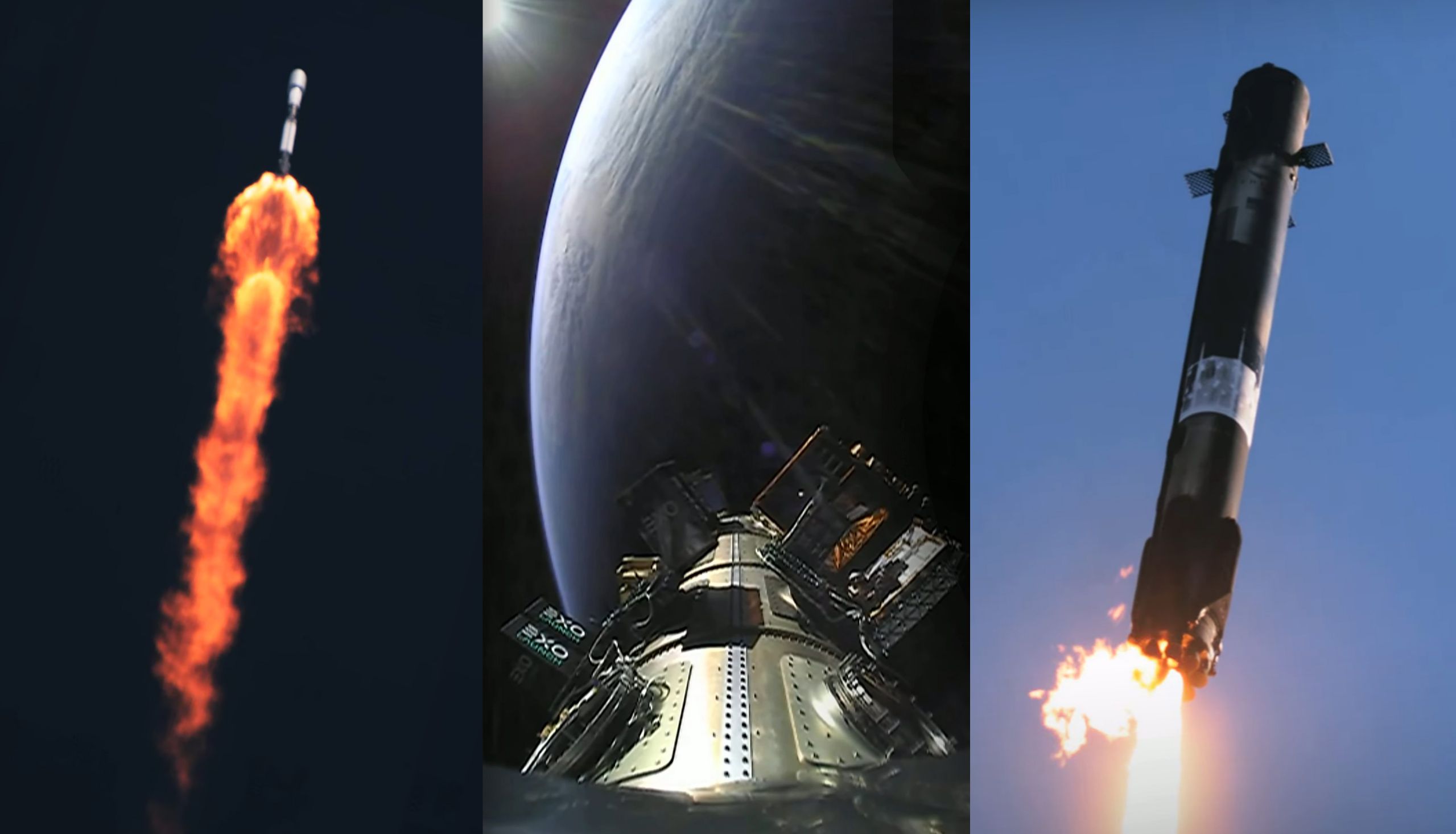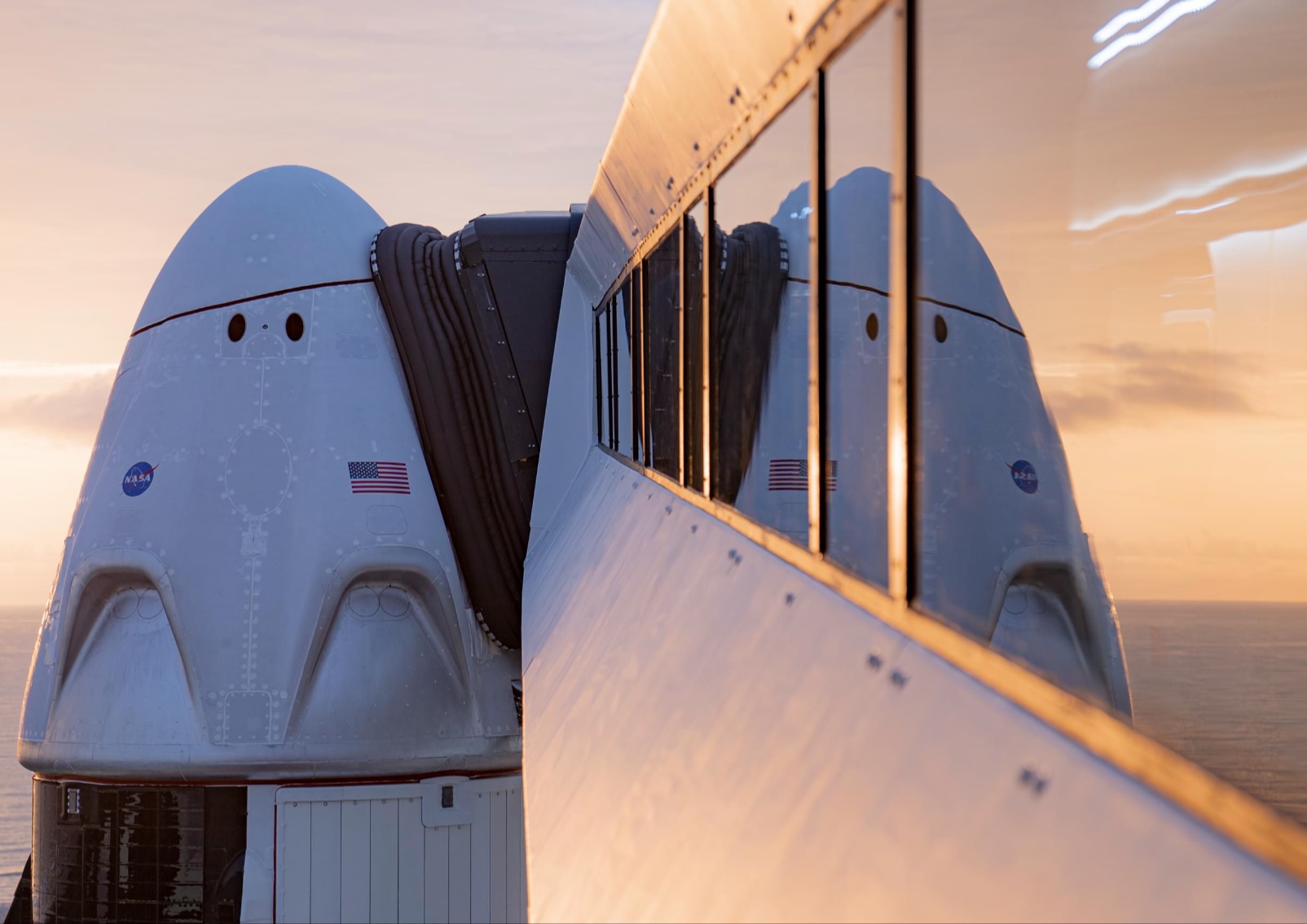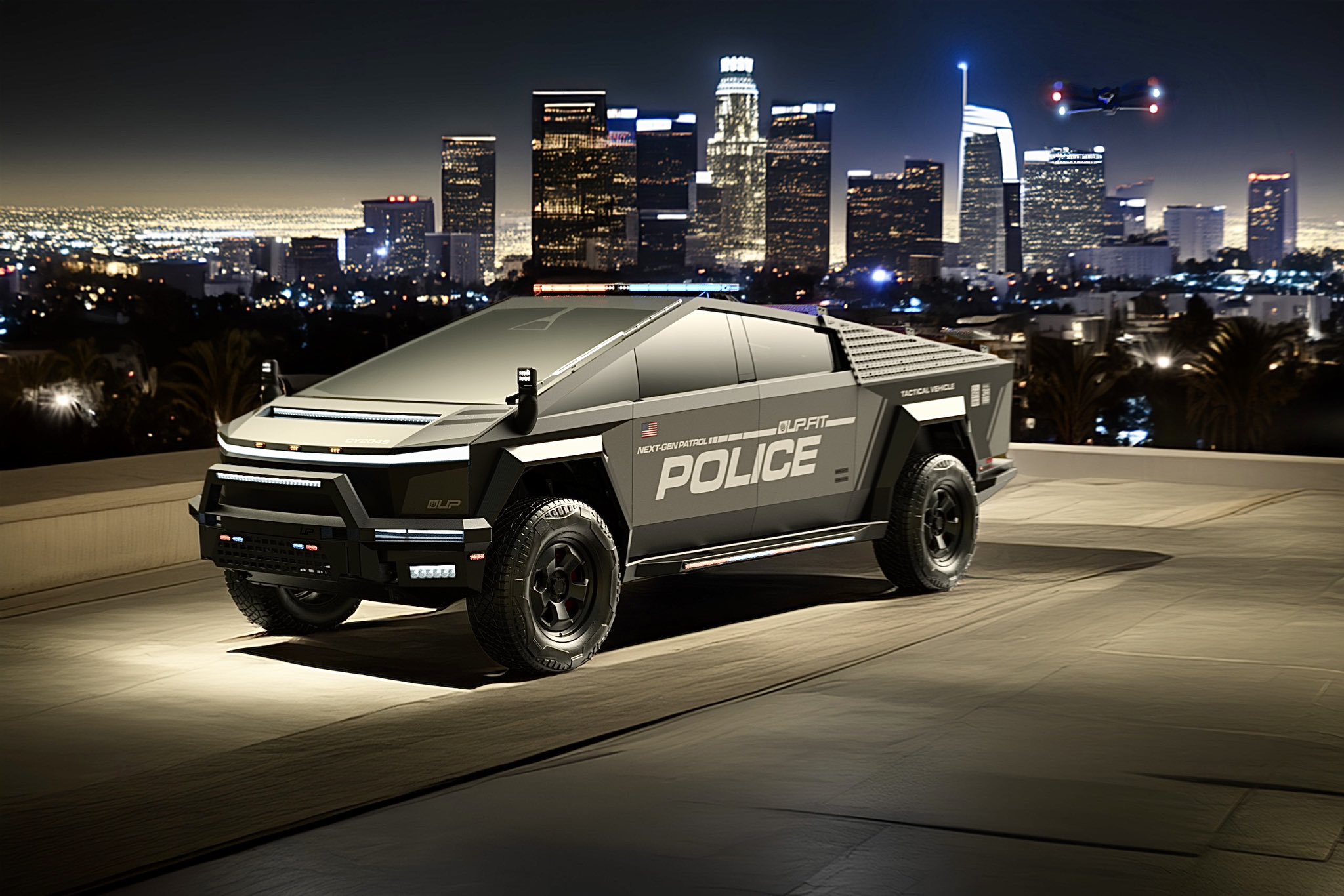

News
SpaceX kicks off 2023 with second largest rideshare launch
After rounding out 2022 with the world’s last orbital launch, SpaceX has kicked off 2023 with the new year’s first orbital launch – also the second-largest rideshare mission in history.
At 9:56 am EST (14:56 UTC), a SpaceX Falcon 9 rocket lifted off on Transporter-6, the sixth dedicated launch under the company’s Smallsat Rideshare Program. SpaceX says Transporter-6 deployed 114 payloads for dozens of paying customers, making it the second-largest rideshare mission ever launched. In addition, marking the latest apogee of a growing cottage industry largely enabled by SpaceX’s affordable and regular rideshare launch services, Transporter-6 carried an unprecedented number of ‘space tugs’ developed by five separate companies.
The update that's rolling out to the fleet makes full use of the front and rear steering travel to minimize turning circle. In this case a reduction of 1.6 feet just over the air— Wes (@wmorrill3) April 16, 2024
At a minimum, Transporter-6’s expansive payload roster included Launcher’s first Orbiter space tug, Epic Aerospace’s first CHIMERA space tug, Momentus Space’s second Vigoride space tug, and two D-Orbit ION space tugs. While their capabilities vary significantly, all of the space tags or transfer vehicles manifested on the mission have a similar purpose: transporting satellites launched as rideshare payloads from their rocket’s one-size-fits-all parking orbit to an orbit more optimized for each spacecraft’s mission.
In theory, that concept could eventually take the shape of a service that lets operators send their satellites to a wide variety of orbits and still take advantage of the savings enabled by rideshare launches – particularly from SpaceX. But that time has not quite come. At the moment, only a few providers have successfully demonstrated space tugs with propulsion systems, and most of those proven options only allow for small orbit tweaks. One tug built by Spaceflight has partially demonstrated the ability to climb from ~300 kilometers to more than 1000 kilometers. Rocket Lab’s Electron kick stage is arguably the most successful in low Earth orbit, and the company has also shown that Photon – an upgraded version of that kick stage – can send payloads to high Earth orbits or even the Moon.
Future tugs could enable routine changes on the order of hundreds or even thousands of kilometers for multiple payloads per flight. Many prospective providers – including Momentus and Epic – hope to follow up their simpler prototypes (and follow in Rocket Lab’s footsteps) with tugs capable of carrying satellites to high Earth orbits, the Moon, and deep space.
SpaceX’s Transporter missions and the space tugs that frequent them all serve the same purpose: getting satellites where they need to go for a diverse range of customers. And Transporter-6 deployed a number of interesting payloads. In partnership with Nanoavionics, French startup Gama launched its first solar sail prototype in the hopes of one day lowering the cost of deep space propulsion and exploration. Momentus will get a second opportunity to demonstrate its Vigoride tug, which is powered by an exotic water plasma propulsion system. Spire launched the first prototypes of an upgraded satellite bus. Orbital Sidekick launched its first Earth observation satellite. Lynk Global launched an in-space cell tower to test the ability to broadcast 5G from space to the ground. Australian startup Skykraft launched its first batch of Block 2 air traffic management satellites and will deploy them with its own free-flying “Deployer 1” – essentially a space tug without propulsion. Planet launched dozens of new SuperDove Earth-imaging satellites. And Ukrainian startup EOS launched Agrisat-1, the country’s first commercial satellite.
Following Transporter-6, SpaceX’s Smallsat Rideshare Program has launched approximately 566 payloads in less than two years. In addition, SpaceX has launched more than 3600 of its own Starlink satellites since November 2019 for a total of well over 4000 satellites launched in a little over three years.
Prior to the end of 2022, SpaceX had never launched a rocket later than December 23rd or earlier than January 6th. That odd gap finally fell at the end of SpaceX’s record-breaking 2022 performance, which saw the company ace 61 Falcon launches in a single calendar year. Transporter-6 will be SpaceX and the world’s first launch of 2023. Never one to stand still, CEO Elon Musk has set SpaceX a target of “up to 100 launches” in the new year.
Rewatch SpaceX and the world’s first orbital launch (and rocket landing) of 2023 below.
News
SpaceX’s Crew-11 mission targets July 31 launch amid tight ISS schedule
The flight will lift off from Launch Complex 39A at Kennedy Space Center in Florida.

NASA and SpaceX are targeting July 31 for the launch of Crew-11, the next crewed mission to the International Space Station (ISS). The flight will lift off from Launch Complex 39A at Kennedy Space Center in Florida, using the Crew Dragon Endeavour and a Falcon 9 booster.
Crew Dragon Endeavour returns
Crew-11 will be the sixth flight for Endeavour, making it SpaceX’s most experienced crew vehicle to date. According to SpaceX’s director of Dragon mission management, Sarah Walker, Endeavour has already carried 18 astronauts representing eight countries since its first mission with NASA’s Bob Behnken and Doug Hurley in 2020, as noted in an MSN report.
“This Dragon spacecraft has successfully flown 18 crew members representing eight countries to space already, starting with (NASA astronauts) Bob (Behnken) and Doug (Hurley) in 2020, when it returned human spaceflight capabilities to the United States for the first time since the shuttle retired in July of 2011,” Walker said.
For this mission, Endeavour will debut SpaceX’s upgraded drogue 3.1 parachutes, designed to further enhance reentry safety. The parachutes are part of SpaceX’s ongoing improvements to its human-rated spacecraft, and Crew-11 will serve as their first operational test.
The Falcon 9 booster supporting this launch is core B1094, which has launched in two previous Starlink missions, as well as the private Ax-4 mission on June 25, as noted in a Space.com report.
The four-members of Crew-11 are NASA astronauts Zena Cardman and Mike Fincke, as well as Japan’s Kimiya Yui and Russia’s Oleg Platonov.
Tight launch timing
Crew-11 is slated to arrive at the ISS just as NASA coordinates a sequence of missions, including the departure of Crew-10 and the arrival of SpaceX’s CRS-33 mission. NASA’s Bill Spetch emphasized the need for careful planning amid limited launch resources, noting the importance of maintaining station altitude and resupply cadence.
“Providing multiple methods for us to maintain the station altitude is critically important as we continue to operate and get the most use out of our limited launch resources that we do have. We’re really looking forward to demonstrating that capability with (CRS-33) showing up after we get through the Crew-11 and Crew-10 handover,” Spetch stated.
Lifestyle
EV fans urge Tesla to acquire Unplugged Performance for edge in fleet and security industry
Unplugged Performance has built a name for itself by producing performance upgrades for Tesla vehicles.

A growing number of Tesla enthusiasts and longtime community voices are calling on the electric vehicle maker to acquire Unplugged Performance, a California-based aftermarket company best known for tuning Tesla vehicles and developing specialized government fleet solutions under its UP.FIT division.
The idea was once considered a niche proposal among EV fans, but it is now gaining serious attention not just as a performance play but as a strategic move to deepen Tesla’s roots in the fleet and security industry.
A strategic fit
Unplugged Performance has built a name for itself by producing performance upgrades for Tesla vehicles, from track-optimized components to visual and aerodynamic upgrades. But in recent years, its UP.FIT division has pivoted toward a more functional future by outfitting Tesla vehicles like Model Ys for police, military, and government use.
That work has sparked growing calls for closer collaboration with Tesla, especially as the EV maker increasingly leans into autonomy, AI, and fleet services as core components of its next chapter.
“I posted this four years ago, but I think it’s more true now than ever,” wrote Whole Mars Catalog, a well-known Tesla investor and FSD Beta tester, on X. “Tesla should buy Unplugged. But not just as a Performance division. What they are doing with UP.FIT unlocks large government and commercial fleet purchases that can improve utilization.”
Tesla fans such as shareholder Sawyer Merritt echoed the sentiment, calling Unplugged a “great fit within Tesla.” adding, “They are literally located directly next to Tesla’s design studio in Hawthorne.”
Enabling the next wave
Supporters of the idea noted that integrating Unplugged into Tesla’s corporate structure could help accelerate the adoption of autonomous technologies in government sectors. With UP.FIT patrol cars already in use across some U.S. police departments, Tesla fans envisioned a future where self-driving Teslas could potentially revolutionize law enforcement, search-and-rescue, and public service logistics.
“Just imagine how autonomous patrol cars could transform policing and bring us into a safer future,” the veteran FSD tester wrote.
The benefits could also extend to Tesla’s existing consumer base. “They also have some incredible products in the works that I think will appeal to many ordinary Tesla drivers — not just those looking for performance or mods. Stuff that’s so good it should have come straight from the design studio next door,” Whole Mars Catalog noted.
Unplugged Performance, founded in 2013, shares not just a product vision with Tesla, but also geography. Its Hawthorne headquarters sits directly adjacent to Tesla’s design studio, and the two companies have maintained a close working relationship over the years. The aftermarket firm has long positioned itself as a “mission-aligned” partner to Tesla.
In response to the recent calls for acquisition, Unplugged Performance acknowledged the support from the community. “Our very existence is to support the Tesla mission with @UpfitTesla and @UnpluggedTesla,” Unplugged CEO Ben Schaffer posted on X. “We love working with Tesla and are grateful for the community’s support since 2013!”
News
Tesla debuts hands-free Grok AI with update 2025.26: What you need to know
All new Tesla vehicles delivered on or after July 12, 2025, will include Grok AI out of the box

Tesla has begun rolling out Grok, an in-car conversational AI assistant developed by xAI, to eligible vehicles starting July 12. The feature marks the most direct integration yet between Elon Musk’s artificial intelligence startup and Tesla’s consumer product lineup, offering drivers hands-free access to a chat-style companion while on the road.
Grok comes pre-installed on new vehicles
According to Tesla’s FAQ page for the feature, all new vehicles delivered on or after July 12, 2025, will include Grok AI out of the box. Owners of older vehicles may gain access through an over-the-air update, provided their vehicle meets a few hardware and software requirements.
Specifically, Grok is currently only supported on Tesla models equipped with an AMD infotainment processor and running vehicle software version 2025.26 and higher. Compatible models include the Model S, Model 3, Model X, Model Y, and Cybertruck. A Premium Connectivity subscription or active Wi-Fi connection is also required.
Tesla notes that additional vehicle compatibility may arrive in future software updates.
Grok’s features and limitations for now
Drivers can engage with Grok using the App Launcher or by pressing and holding the voice command button on the steering wheel. Grok is designed to answer questions and hold conversations using natural language, offering responses tailored to its chosen personality—ranging from “Storyteller” to the more eccentric “Unhinged.”
For fun, Tesla posted a demonstration of Grok likely running on “Unhinged” talking about what it would do to Optimus when they are on a date, much to the shock of the humanoid robot’s official social media account.
It should be noted, however, that Grok cannot currently issue commands to the vehicle itself, at least for now. Traditional voice commands for tasks like climate control, navigation, or media remain separate from Grok as of writing.
The feature is being released in Beta and does not require a Grok account or xAI subscription to activate, although that policy may change over time.
Grok privacy and in-car experience
Tesla emphasizes that interactions with Grok are securely processed by xAI and not linked to a user’s Tesla account or vehicle. Conversations remain anonymous unless a user signs into Grok separately to sync their history across devices.
Tesla has also begun promoting Grok directly on its official vehicle webpages, showcasing the feature as part of its in-car experience, further highlighting the company’s increasing focus on AI and infotainment features on its all-electric vehicles.
-

 Elon Musk2 weeks ago
Elon Musk2 weeks agoTesla investors will be shocked by Jim Cramer’s latest assessment
-

 Elon Musk3 days ago
Elon Musk3 days agoxAI launches Grok 4 with new $300/month SuperGrok Heavy subscription
-

 Elon Musk5 days ago
Elon Musk5 days agoElon Musk confirms Grok 4 launch on July 9 with livestream event
-

 News1 week ago
News1 week agoTesla Model 3 ranks as the safest new car in Europe for 2025, per Euro NCAP tests
-

 Elon Musk1 week ago
Elon Musk1 week agoxAI’s Memphis data center receives air permit despite community criticism
-

 News2 weeks ago
News2 weeks agoXiaomi CEO congratulates Tesla on first FSD delivery: “We have to continue learning!”
-

 News2 weeks ago
News2 weeks agoTesla sees explosive sales growth in UK, Spain, and Netherlands in June
-

 Elon Musk2 weeks ago
Elon Musk2 weeks agoTesla scrambles after Musk sidekick exit, CEO takes over sales
















